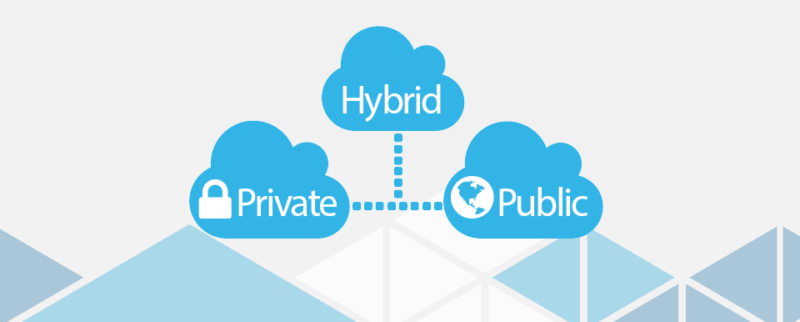Cloud applications have found a firm place in the day-to-day operations of companies. The large suppliers are investing massively in cloud services: the IT research institute IDC expects that their turnover from the cloud will double to 554 billion dollars between 2016 and 2021.
Large “public” cloud service providers (think Amazon, Google, Microsoft and Oracle) have launched innovative services in the past few years such as blockchain applications, IoT back-end data services, encryption services, “serverless” computing services and new computing hardware services.
Another IT research bureau, 451 Research, has calculated that 69% of large companies will have a multi-cloud or hybrid IT environment by 2019. Within two years 60% of the workload will run in the cloud, 15% more than at present.
Four types of cloud
If you read the research, articles and opinions it becomes apparent that there are four types of cloud. The most well-known is the public cloud. Think of your Office 365, Google Docs and suchlike, where you don’t have to bother about the management, maintenance or security of the data centre where your data are stored.
The direct opposite of this is the private cloud, where the company has its own cloud facilities. Such a private cloud can run within the company’s own premises or in a secure data centre. In this case the company itself takes care of the hardware investments, maintenance, back-ups, updates and so on.
Then there is the multi-cloud which applies to a large number of companies and also private users. To return to the public cloud suppliers: if you use the Office 365 email application and share your documents via Dropbox, then you are a multi-cloud user since you are utilising both the Microsoft cloud and the Dropbox cloud.
Finally there are hybrid IT applications which are also a reality for most companies, where certain applications run in the cloud and others on the premises.
What’s in a name?
The main thing companies worry about when they hear the term “public cloud” is security, as they associate this concept with a public space where anyone can wander in and out.
Nothing could be further from the truth.
“Our customers who have switched to TRIS-cloud are by definition in a public cloud, since a private cloud is prohibitively expensive for them. But within this public cloud they have their own private cloud which is ring-fenced and secured. For instance, their cloud environment can only be accessed from certain IP addresses that they themselves specify,” explains Intris CTO Tony Vertenten.
IAAS, SAAS or both?
Intris offers its own logistics software in various ways. You can buy everything “on-premises” or opt for a “rental” formula: this is the well-known SaaS concept (software as a service). “This cloud solution saves a whole lot of problems for the customer in terms of maintenance, updates and security,” Vertenten continues. “Furthermore this business model doesn’t take a big bite out of your budget, so the company can accurately calculate its expenditure and use its cashflows for other purposes.”
Then there is the IaaS solution: Infrastructure as a Service. In this case the company opts for the server on which its software runs to also be located in the cloud. “Our cloud solutions cover both ‘services,’ but if the customer also wants to run non-TRIS applications on a virtual server, for instance its own accountancy package, then that’s perfectly feasible,” Tony Vertenten concludes.

